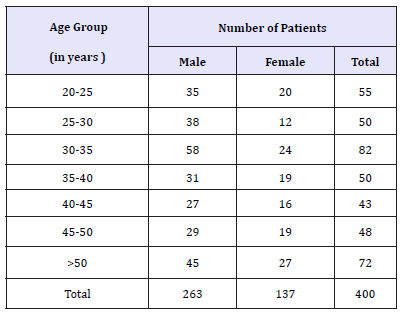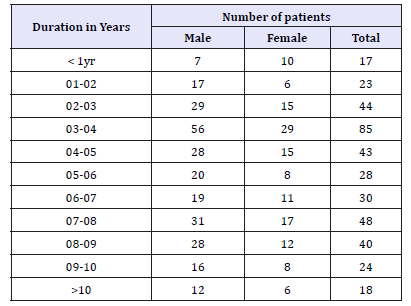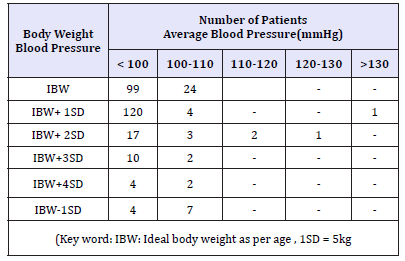- Submissions

Full Text
COJ Nursing & Healthcare
SciaticNeuralgia an Agonising Encumbrance and its Modern Approach
Avinash Shankar1*,Amresh Shankar2 and Anuradha Shankar3
1 Chairman National Institute of Health & Research Warisaliganj, India
2 Honorary Director State Health Services, Government of Bihar AarogyamPunarjeevan, India
3 Director Centre for Indigenous Medicine & Research Warisaliganj, India
*Corresponding author: Avinash Shankar, Chairman, National Institute of Health & Research Warisaliganj (Nawada) Bihar 805130, India, Tel: 9279380432/8227803007; Email:dravinashshankar@gmail.com
Submission: February06, 2018;Published: July12, 2018

ISSN: 2577-2007Volume3 Issue4
Abstract
Sciatica not a medical diagnosis but is a symptom of an underlying vertebral condition i.e.,-lumbar herniation. dislocated disc, Spondylolisthesis and spinal stenosiswhere usually practiced medicine.Physicaltherapy, surgery and even alternative therapyfails to ensure cure but present regimea composite ofintravenous Calcium supplementation, cholecalciferoland bio neurogen composite achieved grade I clinical response in 93% cases without anywithdrawal. Drug adversity, hepatorenal alteration and recurrence in 5yrs of post therapy follow up with excellent quality of life.
Keywords: Sciatic neuralgia; Radiculitis; Spondylolisthesis; Spinal stenosis; Lumbar disc herniation; Bio neuragen
Introduction
Sciatica a clinical condition presenting with leg pain, tingling and numbness, weakness in the lower back radiating down wards up to legs both front and outside which is usually due to either lumbar herniated disc, degenerative disc disease, Spondylolisthesis or spondylolithiasis or spinal stenosis. This affect 2%-40% of population presenting with encumbrance at same point of life in the age group of 40-50 years and men outnumber women [1].
The literature reveals use of analgesics, steroids to relieve pain, may relieve pain but fails to alleviate presentation, though use of Gabapentine for acute is quite in vogue but non ensure satisfactory clinical relief or improved quality of life. In addition, alternative therapy like Spinal manipulation and surgery are also in vogue with intent to alleviate agonising state [2]. Thus, in this agonising disease having no secured curative therapeutic modality a clinical evaluation program is conducted at RA.Hospital & Research Centre, Warisaliganj (Nawada) Bihar.
Aims and Objectives
Asses the clinical efficacy of a combo therapeutic modality in cases non responsive to Sciatica of varied origin and etio pathogenesis.
Materials& Method
Patients of sciatica of various etiopathogenesis attending medical OPD of RA. Hospital & Research Centre, Warrisaliganj (Nawada) Bihar been selected as per following index-Patients with-
A. Constant pain in only one side of the leg or buttock [3]
B. Pain originates in low back or buttock and continues along the path of sciatic nerve down the back of the thigh, lower leg and foot.
C. Pain becomes worse on sitting or standing, exacerbate on sneezing or coughing
D. Pins and needle sensation, numbness, weakness or pricking sensation
E. Weakness Or numbness on moving the leg or foot
F. Severe or shooting pain in the leg
G. Pain and other symptoms in toes.
All the selected patients were thoroughly interrogated, examined and assessed for straight leg raising test (Positive Lasegue’s Sign) i.e.- Pain in the distribution of Sciatic nerve, blood sugar, hepato renal status to ascertain post therapy drug related adversity.
Based on clinical presentation and its severity patients were classified in Table 1. Patients having associated hypertension, myxoedema (hypothyroidism) and diabetes mellitus are duly controlled with dietary restriction and drug therapy. In diabetes mellitus and hypertension carbohydrate and high fat dietare duly restricted,in addition all the cases with hyper lipidemic state baked seed of Linseed (Linumusitatissimum)in dose of 5gm morning and evening to be chewed daily. Prior to advocation of trial drug patients were re assured for bio regulated blood sugar, serum cholesterol and blood pressure. In addition, persons with body weight >IBW been suggested for dietary control to ensure IBW to alleviate pressure over the vertebral column due to overweight [4].
Table 1:Clinical presentation and its severity of the patients.

Regime prescribed
Injection Calcium Gluconate 1 ampoule intravenous very slow with 24 numbered scalp vein set (Measure blood pressure, in hypertensive Calcium should be avoided)
Inj Methyl cobalamin 1500mcg+Nicotinamide+Pyridoxin 1 ampoule every 4thday very slow Cap Bio neuragen 1cap daily Or Syrup 10ml 12hrly for adult [Bio neuragen constitutes natural resource i.e.- equal part of powder of Acorus calamus (rhizome), Herpestismonnieri (leaf), Nardostachysjatamansi (flower), Convolvulus pluricaulis (Flower)either in capsule form or syrup constituting 500mg each capsule or 500mg each 10ml].
Proton pump inhibitor and analgesic anti arthritic (Aceclofenac sustained release with rabiprazol(Cap Dolostat +R OrRaceclo1cap daily). Active and passive exercise Cap Cholecalciferol D3 60K every week, Each patient been given a follow up card with facility to enter in Table 2. On every 3 months patient’s blood analysis for blood sugar, hepatic, haematological and renal function were assessed to ascertain any drug adversity and safety profile of the advocated regime. Based on therapeutic response, clinical achievement been graded in Table 3.
Table 2:Follow up card.

Table 3:Grading of clinical achievement based on therapeutic response.

Observations
Figure 1:Bar diagram depicting the percentage wise distribution the study sample according to age.

Selected patients were of age group above 20 years and among them majority (20.5%) were of age group 30-35 years while18% patients were of age >50 years Table 4. Out of all 65.7% were male and 34.25% were female Figure 1.
Out of all 47% patients were suffering since >5 years and 4.5% were from >10 years while majority (21.25%) patients since last 3-4 years Table 5. As per occupation majority (127) were house hold workerwhile 85 were labourer, 116 were motor cyclist and 29 were cyclist, and 55 were leading sedentary life style Table 6. Among them 210(52.5%) were of severe degree of clinical presentation while 180(35%) moderate and 10(2.5%) mild Figure 2. As per clinical diagnosis majority (71.5%) were of radiculitis while 12.5% were of spinal disc herniation Table 6. 2.75% patients were with low body weight while 40% were obese and overweight, 62.25% were normotensive while 0.5% was hypertensive Table 7. 64.2% male and 74.5% female were with fasting blood sugar< 100mg%while 2.6% male and 4.3% female with blood sugar>150mg.35.7% male and 25.5% female were with haemoglobin concentration < 10gm %,2.3% male and 3.6% female were with SGOT and SGPT >35IU,22.4% male and 5.1% female were with blood urea >30mg % and Serum creatinine >1.5mg%. 93% patients had grade I clinical response while 6.5% shows grade II with relapse in 0.5% cases [5]. None shows any drug adversity or needed any adjuvant or had acute surge of presenting agony Table 8.
Table 4:Grading of clinical achievement based on therapeutic response.

Table 5:Grading of clinical achievement based on therapeutic response.

Table 6:Grading of clinical achievement based on therapeutic response.

Table 7:Grading of clinical achievement based on therapeutic response.

Table 8:Grading of clinical achievement based on therapeutic response.

Figure 2:Bar diagram depicting the percentage wise distribution the study sample according to age.

Result
Patients of sciatic neuralgia Or Sciatica of varying stage and etiopathogenetics of age group 20-50 years non-responsive to various conventional and recommended therapeutics, had grade I clinical response in 93% patients with present therapeutic modality (Figure 3).
Figure 3:Bar diagram depicting the percentage wise distribution the study sample according to age.

Discussion
Table 9:Outcome of therapy

Sciatica, an agonising presentation in area supplied by sciatic nerve i.e. back to posterior part of lower extremity up to heel, though conventional management i.e. drugs, physiotherapy and surgical intervention fails to achieve cure the present study comprising use of therapeutic modality achieve grade I clinical response in 93% patients while 0.5% cases had grade III response as etio pathogenesis of sciatic pain is usually due to decline neuro conduction, glial damage and neuronal oedema ,in addition increasing incidence is solely due to changed life style [6], presence of dietary non nutrients which causes toxic glial necrosis or degeneration Table 9. Intravenous Calcium supplementation provide ionic calcium to boost neuro transmission and conduction, Chole calciferol helps in fatty acid bioregulation and ionic calcium concentration, biogenic neurogenic constituents i.e.-active ingredients of Acorus calamus, Herpestis monnieri, Nardostachys jatamansi, Convolvulus pluricaulis and Cassia angustifolia helps in neuroglial regeneration, disc repair,limit inflammation. Analgesic antarthritic aceclofenac sodium 200mg (SR) helps in acute pain relief while Proton pump inhibitor safe guard gastric mucosa. Bio regulative effect of biogenic neuragen checks recurrence or withdrawal due to its neuro generative effect [7].
References
- Ropper AH, Zafonte RD (2015) Sciatica. N Engl J Med 372(13): 1240- 1248.
- Valat JP, Genevay S, Marty M, Rozenberg S, Koes B (2010) Sciatica. Best Pract Res Clin Rheumatol 24(2): 241-252.
- Koes BW, Van Tulder MW, Peul WC (2007) Diagnosis & treatment of sciatica. BMJ 334(7607): 1313-1317.
- Pinto RZ, Maher CG, Ferriera ML, Ferriera PH, Hancock M, et al. (2012) Drugs for relief of pain in patients with Sciatica, systemic review and meta analysis. BMJ 344: e497.
- Rasmussen BE, Held U, Grooten WJ, Roelofs PD, Koes BW, et al. (2016) Non-steroidal anti inflammatory drugs for sciatica. Cochrane Database Syst Rev 10: CDO12382.
- Waseem Z, Boulias C, Gordon A, Ismail FSG, Furlan AD, et al. (2011) Botulinum toxin injection for low back pain and sciatica. Cochrane Database Syst Rev 1: CD008257.
- Chou R, Hashimoto R, Friedly J, Fu R, Bougatsos C, et al. (2015) Epidural corticosteroid injection for radiculopathy and spinal stenosis. A systemic Review and Meta analysis. Ann Intern Med 163(5): 373-381.
© 2018 Avinash Shankar. This is an open access article distributed under the terms of the Creative Commons Attribution License , which permits unrestricted use, distribution, and build upon your work non-commercially.
 a Creative Commons Attribution 4.0 International License. Based on a work at www.crimsonpublishers.com.
Best viewed in
a Creative Commons Attribution 4.0 International License. Based on a work at www.crimsonpublishers.com.
Best viewed in 







.jpg)






























 Editorial Board Registrations
Editorial Board Registrations Submit your Article
Submit your Article Refer a Friend
Refer a Friend Advertise With Us
Advertise With Us
.jpg)






.jpg)














.bmp)
.jpg)
.png)
.jpg)










.jpg)






.png)

.png)



.png)






